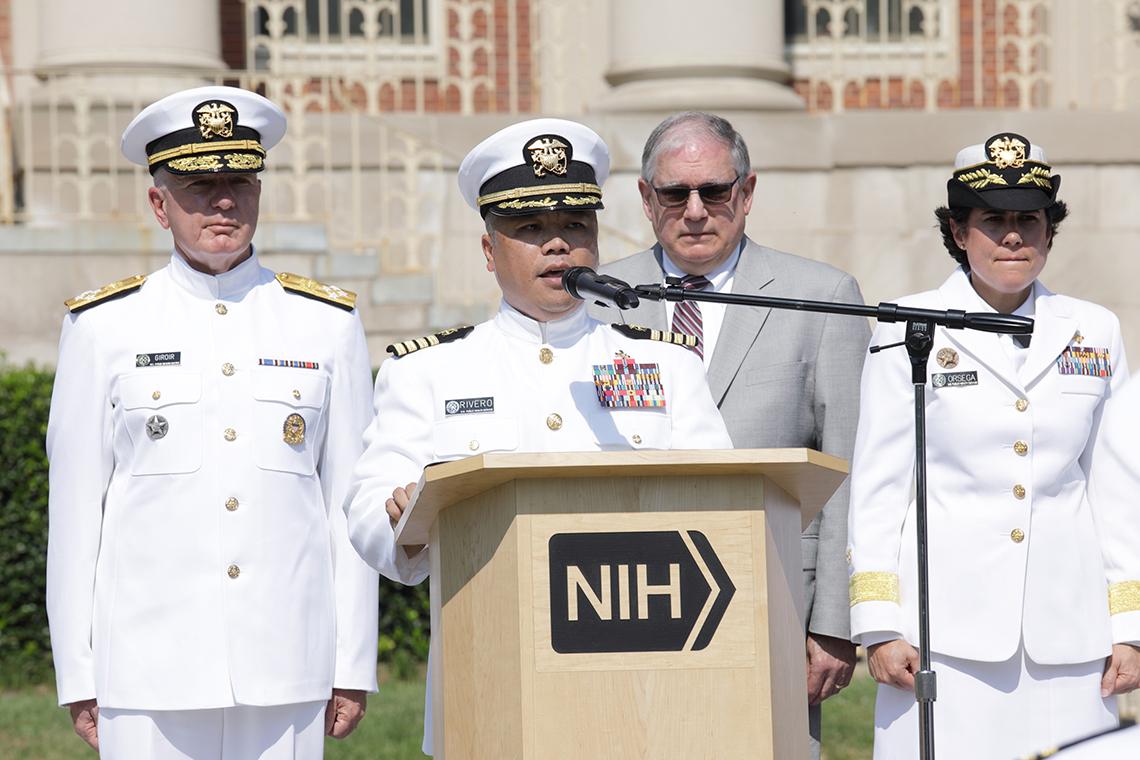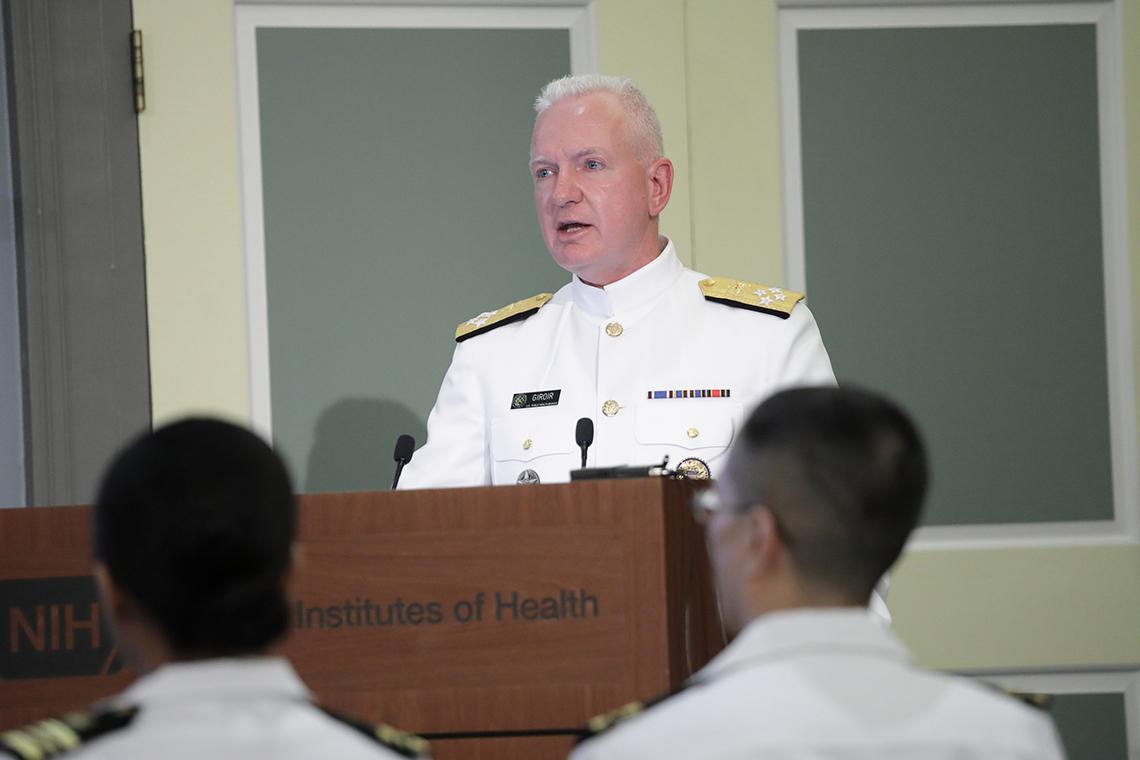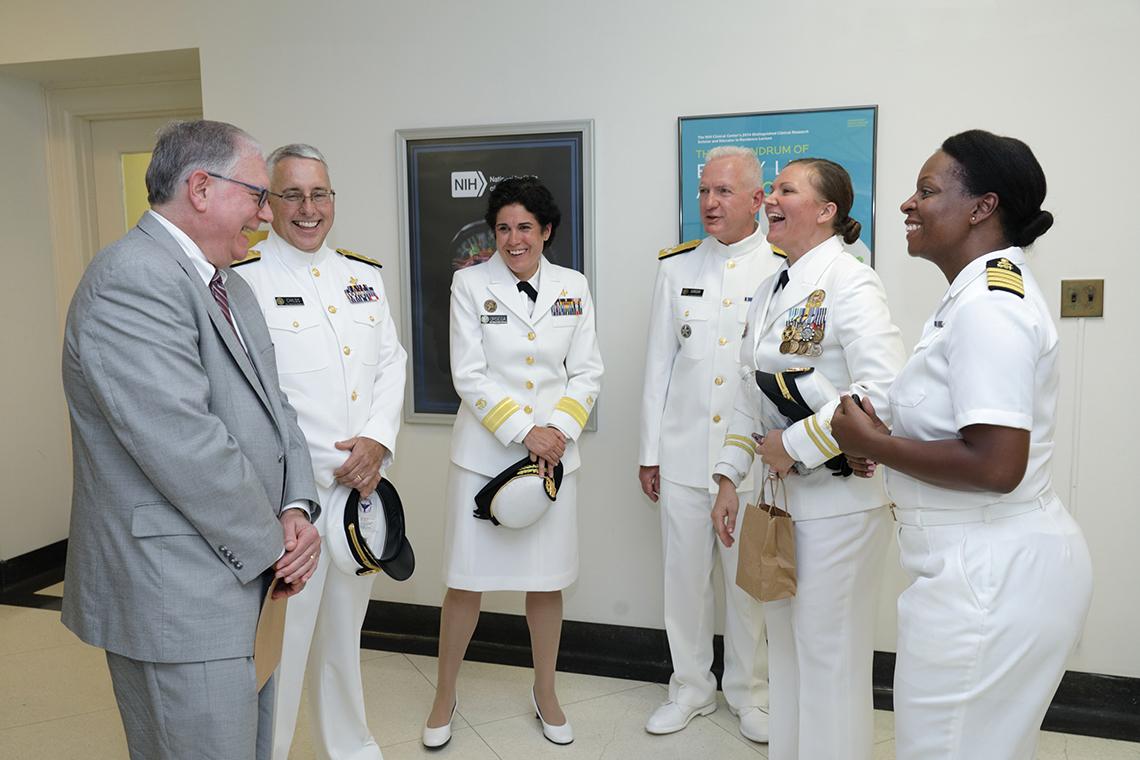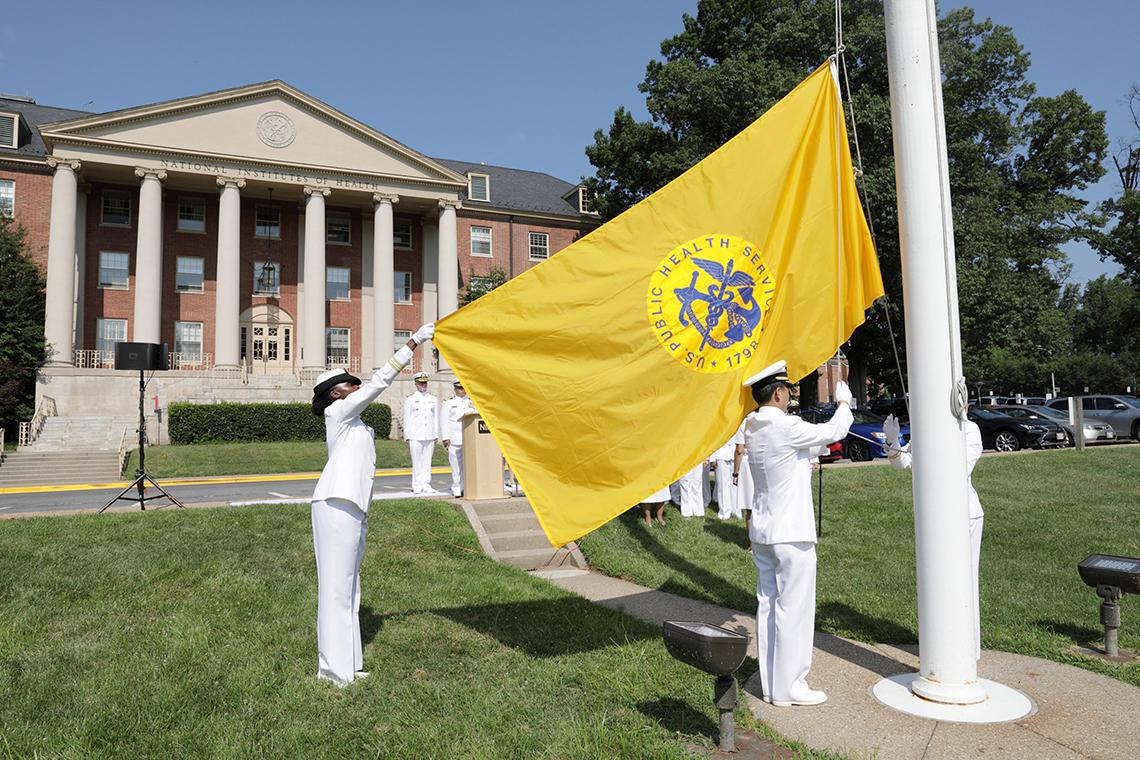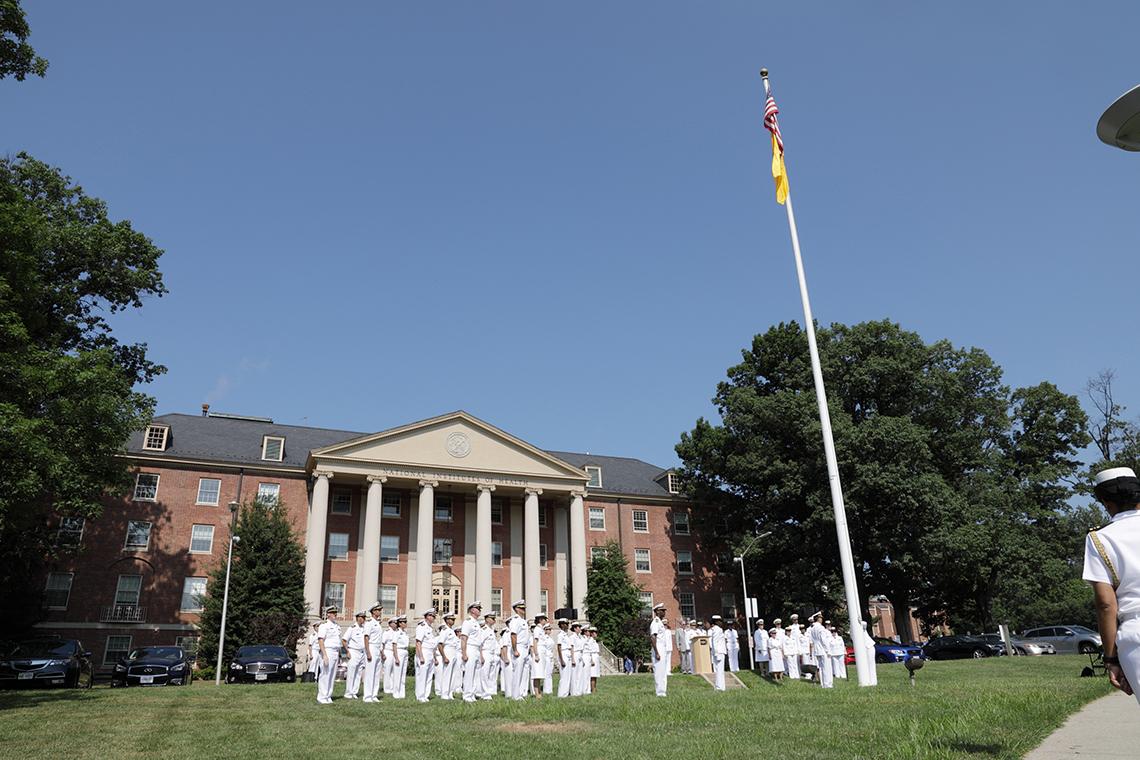PHS Celebrates 220th Birthday
On July 16, outside Bldg. 1, the Public Health Service flag was raised, just below the American flag. On that date, 220 years ago, President John Adams signed into law the “Act for the Relief of Sick and Disabled Seamen,” which paved the way for a network of marine hospitals and thus began the story of the Public Health Service.
After the flag-raising, a ceremony in Wilson Hall honored the history of the Public Health Service and the Commissioned Corps. On Jan. 4, 1889, Congress created the Commissioned Corps in response to a shortage of health care in the Marine Hospital Service (renamed the Public Health Service in 1912). Since its creation 129 years ago, the Commissioned Corps has served the nation to decrease mortality and morbidity in the areas of vaccination, healthier mothers and babies and control of infectious diseases.
There are more than 6,500 uniformed health officers in the Commissioned Corps who serve in 800 locations in every state and worldwide to protect, promote and advance the health and safety of our nation.
“Where there’s a need, we’re there,” said assistant secretary for health Adm. Brett Giroir in keynote remarks at the annniversary.
And that need remains great. The United States spends more on health care than any other developed country, yet ranks highest in chronic disease and obesity, said Giroir. Meanwhile, in 2015, U.S. life expectancy began decreasing for the first time in 15 years and the death rate for 9 of the 10 leading causes of mortality has risen.
“Despite our spending, we’re getting less healthy,” he said. “This is the first time in history that our children will likely live shorter, less quality lives than we do, and I won’t accept that.”
Giroir, who is also a pediatrician, is equally concerned that U.S. preterm birth rates have risen dramatically over the last 2 years and maternal mortality is the highest in the developed world. There are myriad emerging threats too, from rising opioid and alcohol addiction and suicide to new infectious diseases and antimicrobial resistance.
“I’m committed to using the Commissioned Corps as an agent of change,” said Giroir.
The risk of many diseases can be greatly reduced with healthy lifestyle changes. Addressing the substance abuse and mental health epidemics will require the help of more nurses, behavioral health specialists and social workers, he said. And so much is becoming possible by harnessing the latest research and leveraging digital platforms.
“We need to transform the current sick care system into a health-promoting system,” Giroir said. “This ultimately means we have to work on the social determinants of health and behaviors that underlie all chronic conditions.”
At a medical conference Giroir attended in Oklahoma, one of the kudos posted was what he believes encapsulates the service and dedication of the Commissioned Corps: “Thank y’all for taking the time to help others. People like you help us all keep faith in humanity.”—Dana Talesnik

